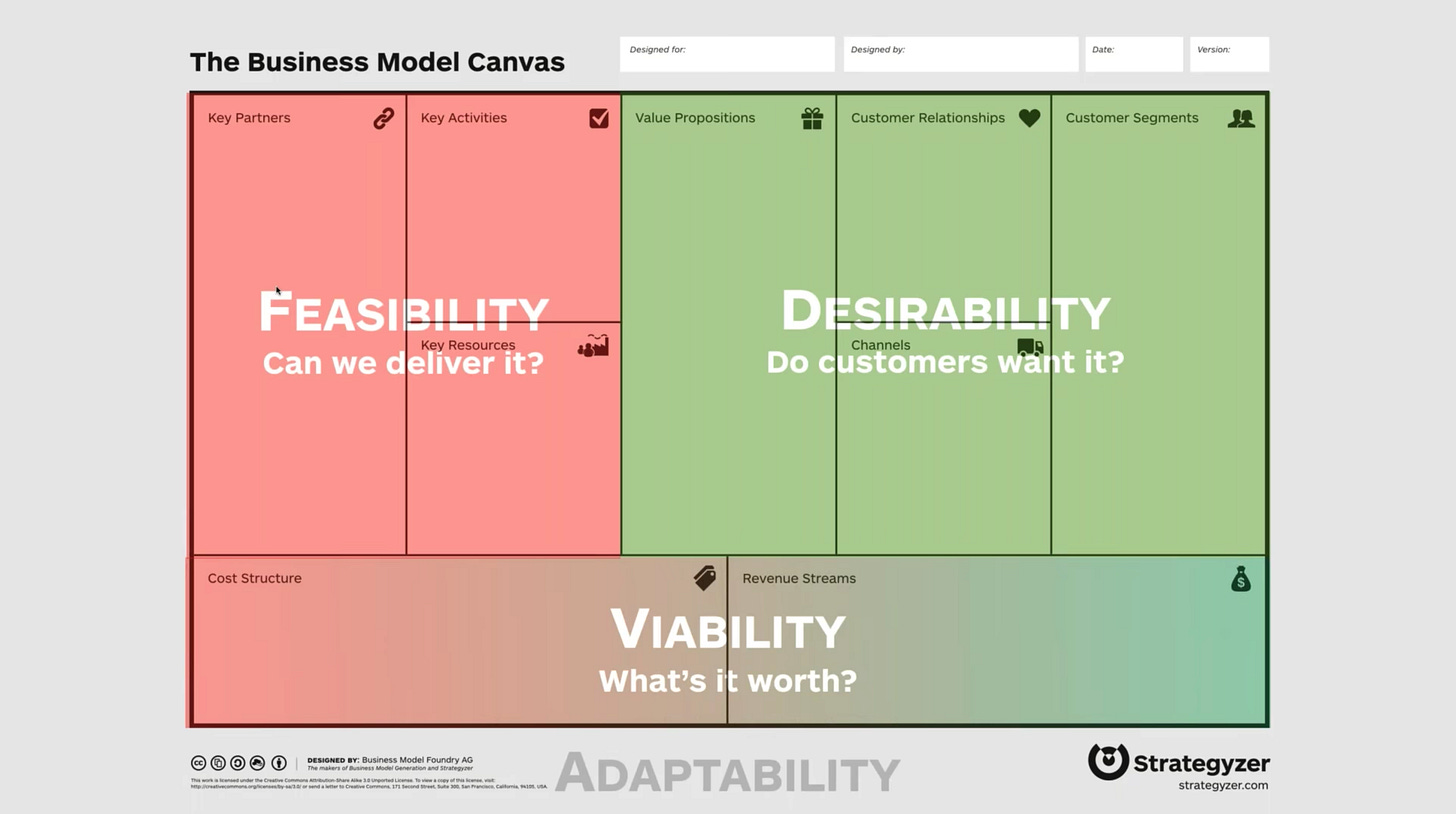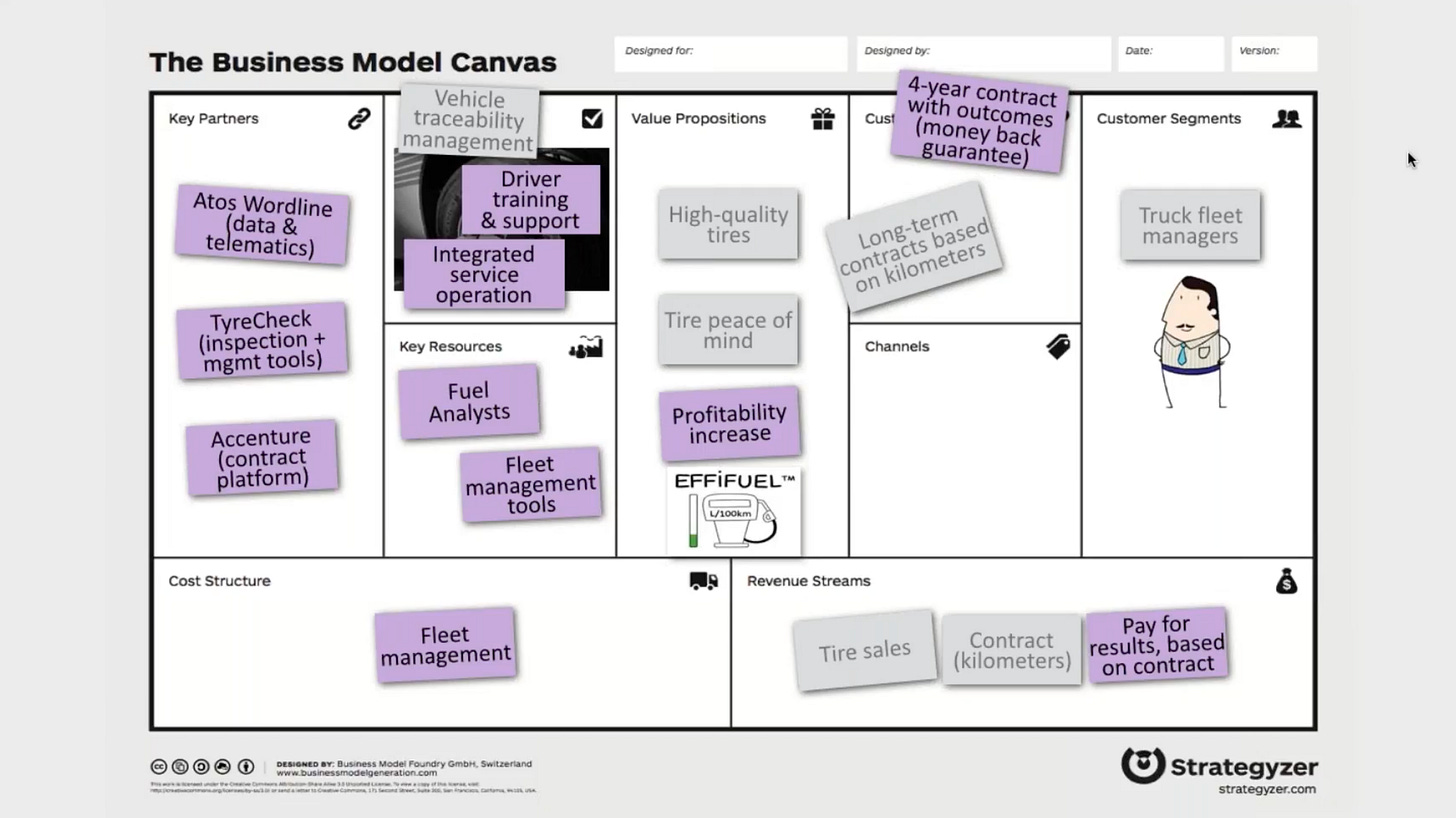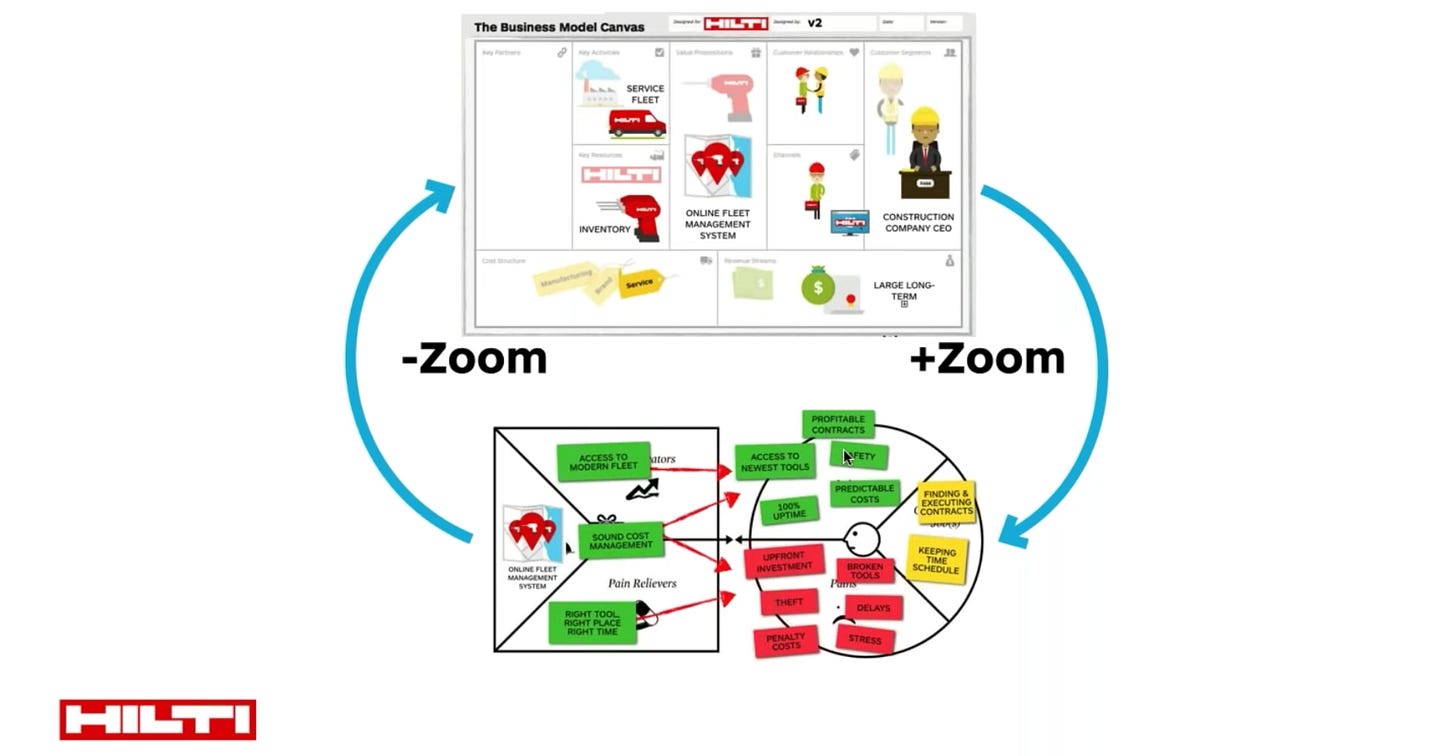⚙️ Understanding The Mechanics of a Startup
How different frameworks can help us decode the what and how of ventures • 6 min read
Companies come in all shapes and sizes, and their many moving parts can be difficult to grasp. Enter the business frameworks: from the reliable 4 Ps & 3 Cs to the thorough McKinsey 7-S, there’s no shortage of these useful models.
Some of the most useful tools I’ve come across are the Business Model Canvas and the Value Proposition Canvas from Strategyzer: not only do they capture the essential things you should be considering when looking under a venture’s hood, but they also display these concepts in a visual medium that makes them easier to digest. Let’s dive in.
I. The Business Model Canvas
A successful business model depends on four key areas:
Desirability – do customers want it?
Feasibility – can we deliver it?
Viability – should we do it?
Adaptability – is the market timing right?
A Business Model Canvas can help us probe into those areas and get more granular into how they can feed off of each other.

Matching a desirable product to a relevant audience is the crux of desirability, and these two components correspond to the Value Proposition and Customer Segments buckets above. Tying them together are the (Distribution) Channels and the Customer Relationships.
Feasibility determines if something can be realistically achieved given current technologies and/or ecosystems. It’s three relevant buckets are the Key Activities, Key Resources, and Key Partners.
Viability evaluates whether a business makes financial sense, either now or in the future. This will depend on the ratio and cash flow of the Cost Structure and the Revenue Streams.
Finally, adaptability relates to how the business can survive and even thrive in the environment that surrounds it. Its buckets aren’t pictured above, but they consist of Industry Forces, Market Forces, Key Trends, and Macro Economic Forces.
Multiple items can be placed within each bucket to describe how a business model can work, and an iterative process can create a trail canvases that serve as a visual history of a shifting and adapting models.
Here’s a 2 minute primer video on it, and there’s an example below on a service based model that Michellin moved to in order to fight climate change (while making customers happier).

II. The Value Proposition Canvas
This canvas zooms in on the desirability area and focuses on the customer and the value proposition. On the customer side we’ve got their Jobs To Be Done (what goals do the users have?), their Pains (what are they trying to avoid?), and their Gains (what upsides are they looking for?). On the value proposition side we have the product being offered and how they relieve the customer’s pains and create their gains.
Here’s a 3 minute primer, and below you’ll find a partially completed example from the Michelin case.
III. Making Sense Of It All
When looking at a startup I like to start at the Value Proposition Canvas to make sure I understand the dynamics of the product and its customer. Then, zooming out and looking at the delivery channels and the customer relationship paints the rest of the desirability section, after which I cover the feasibility and viability (or path to it). These two canvases influence each other after every revision, so it’s worth keeping in mind that multiple iterations are often needed.

Another salient point is that while we often think of innovation happening in the desirability space (such as a new product being introduced), it can often happen through new business models. Think of Airbnb or Uber, for example: the concepts of renting rooms or paying for a car ride are far from new, but the offerings and channels put forward in their business models made them into very successful companies.
These canvases not only allow us to visualize how companies work, but also let us iterate and connect disparate pieces to bring new value into customers’ lives. I’ll tackle some more examples in the coming weeks.
Three things I enjoyed this week
🎼 One song
Andrew Bayer’s It’s Going To Be Fine – taking a break from trance after a personal loss sees Bayer dive into an experimental sound on the LP If It Were You, We’d Never Leave. The entire project is worth a listen, and this track samples from Sufjan Steven’s The Seer’s Tower for a slightly more engaging take on the original’s morose sound.
📹 One video
Drive Capital’s A Master Class In Venture Capital with Drive Capital's Chris Olsen – ever wonder how startups are funded? This master class covers the main beats: what venture capital is, how it works, and why it tends to focus on technology. At 45 minutes it isn’t a quick watch, but it’s chock full of great nuggets that’ll leave you feeling a bit smarter on how it all works.
📖 One article
The New York Times’ There’s a Name for the Blah You’re Feeling: It’s Called Languishing – while most of us are familiar with the concepts of burnout and depression – particularly during this pandemic – a pernicious sibling to those is languishing. Take care of yourselves, folks.
It wasn’t burnout — we still had energy. It wasn’t depression — we didn’t feel hopeless. We just felt somewhat joyless and aimless. It turns out there’s a name for that: languishing.
Languishing is a sense of stagnation and emptiness. It feels as if you’re muddling through your days, looking at your life through a foggy windshield. And it might be the dominant emotion of 2021.
– Adam Grant, published in the New York Times




